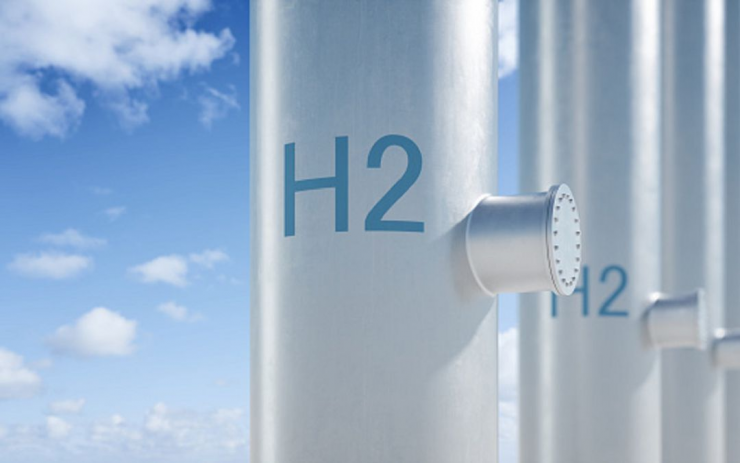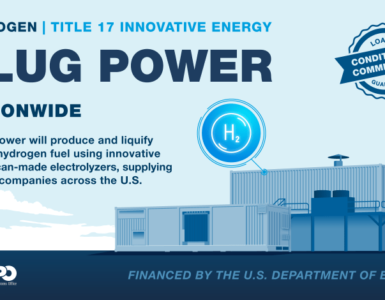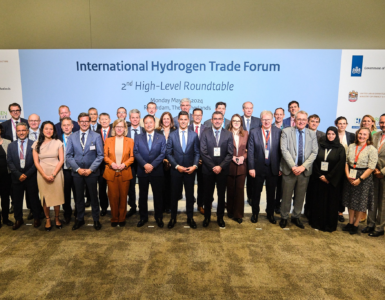Spain – Valle del Ebro, Hydrogen Valley.
[Cadena SER, Originally in Spanish] Energy from hydrogen is already key in Europe in the decarbonisation process until 2050, the date set to reach a climate-neutral energy system. In the energy mix of renewable energies, hydrogen could exceed 20% in energy demand in heavy transport, and between 5 and 20% in industry.Aragon has a privileged position: the Aragon Hydrogen Foundation, with 18 years of experience, has just launched the GetHyGA initiative, which will mobilize more than 2.3 billion euros in the next 15 years. Heavy transport, energy supply and reindustrialization are three of the sectors that are already benefiting from this technology.
Marcos López – Brea, director of the first executive renewable hydrogen program of the School of Industrial Organization, linked to the Ministry of Industry.
🔥 What about we co-host a webinar? Let's educate, captivate, and convert the hydrogen economy!
Hydrogen Central is the global go-to online magazine for the hydrogen economy, we can help you host impactful webinars that become a global reference on your topic and are an evergreen source of leads. Click here to request more details
Aragon – and it is not from now – has a very relevant role in promoting renewable hydrogen at a European level.
In fact, the Aragón Hydrogen Foundation “has already participated, for 15 years and even more, in European projects in which the use of renewable hydrogen has been promoted”, he highlights.
Ebro Valley, hydrogen valley
The objective of the GetHyGA initiative is to create a “hydrogen valley” in the next 15 years, that is to say an “industrial ecosystem based on this technology to decarbonise”, in which 78 business projects are already planned, explains the managing director of the Hydrogen Foundation in Aragon, Fernando Palacín.
Among the sectors in which this technology can be applied are “everything that is the decarbonization of different sectors, such as industrial, chemical, mobility and the backbone of the rural environment” and places that are difficult to access, continues Palacín.
In this “valley of hydrogen”, in addition to “using technologies to decarbonise productive activities such as, for example, transportation”, it also aims to “promote r & d & i, training and that hydrogen is an opportunity to reindustrialize and change the realities that we have in Aragon “, says Palacín. In addition, the Foundation has just approved its Master Plan until the year 2025.
Hydrogenerators
One of the leading Aragonese companies is the Calvera Industrial Group, with more than 40 years of experience. Currently, it is the only manufacturer of hydrogenerators in Spain, and the main one in southern Europe.
The forecast is that in the next 10 years, our country could demand between 100 and 150 hydrogenerators for forklifts, buses or trucks.
Rafael Calvera, General director.
It is a simpler technology than in the light vehicle.
“There is nothing today with green energy that allows for as many kilometers as with hydrogen,” he continues.
How much autonomy can they have? “In trucks, they are talking about 600 – 700 kilometers with a full tank and they are talking about reaching 1,100 kilometers, as if it were a diesel vehicle,” he says.
And how does a hydropower plant work? “It is similar to what we are used to,” he explains.
“The gas station receives the hydrogen through tanks or it can produce the hydrogen in the same gas station with electrical energy” and “once the hydrogen is in the gas station in tanks, through compression and storage systems, a nozzle is put on, just like if it were gasoline, you hit the pump button and you fill them exactly the same, “he explains. “Instead of pouring a liquid you are pouring a gas.”
Passengers and goods, to the train
Another means of transport that can also use hydrogen technology is rail. The DH2 company plans to build a large plant to manufacture hydrogen with renewable sources in Plasencia del Monte, in the Huesca province, next to the Canfranc road.
It could be completed in the first quarter of 2023 and supply a fuel cell “and that would allow decarbonizing the use of fossil fuels on the route where the line is not electrified”, explains Marcos López – Brea, general director of DH2.
Another project in which this company participates, much more ambitious and together with Adif and its French counterpart (SNCF) and the Ministries of Transport, is to link the cities of Zaragoza and Pau with a hydrogen train, a project linked to the opening of the Canfranc line and the railway connection between Spain and France.
The objective is “to facilitate, above all, the transport of passengers and goods, with the consequent savings that exist with the use of hydrogen from the electrification of this entire route, which would be very expensive”, remarks López – Brea. In fact, he affirms, “it is one of the possible ways, at an energy level, for this path to work with hydrogen.”
READ the latest news shaping the hydrogen market at Hydrogen Central
Ebro Valley, hydrogen valley, Saragossa, September 19, 2021








